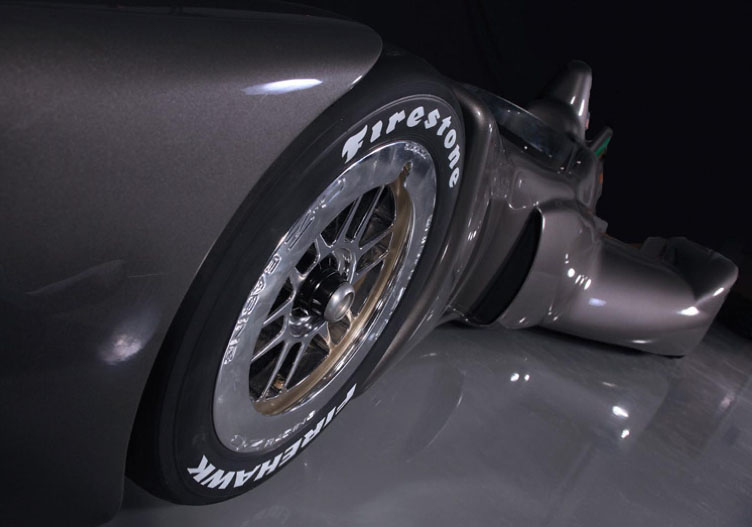The Delta Wing – Safety by Design
 |
| The Delta Wing has very thick tub-wall construction for side-impact protection |
In our chats with Ben Bowlby, he first said "Well, let me tell you this. If you were to walk up to the Target Chip Ganassi Car today, and give the side of it even a half-hearted kick, your foot would go right through the body work, and likely hit the Honda ECU and some radiator hoses and other wiring. The sidepods, though having the appearance of a substantial piece of construction, are in fact inconsequential in an impact scenario."
In thinking about this, and having seen the bodywork off the sidepods of the current style of formula cars, this is absolutely true. However, when you see that bodywork, your mind just tells you that there is something there.
Ben told us that the tub of the Delta Wing design is much thicker than the current design, and though there has not been any real-world testing, the computer calculations indicate that the protection against intrusion, as well as fracturing of the tub, is much improved.
The side-intrusion factor is what presents one of the biggest threats to the driver. In combination with the current nose designs, the susceptibility of a tub to intrusion from the nose of another car, can cause a tub to be cut completely in half, which we have all seen in various accidents over the past several years.
So a stronger sturdier tub is a must, and the Delta Wing has been designed with this in mind, yet with lighter weight than the current car.
The lighter weight is also a safety factor as it decreases the over impact energy in an accident.
 |
| The Delta Wing nose section is located far ahead of the front wheels and is a deformable energy absorbing unit |
Finally, it is easy to see that the nose design on the Delta wing has quite a bit of overhang ahead of the front wheels. This is an large energy-absorbing structure that provides significant protection in a frontal impact, and also provides protection to the other driver in a car-to-car perpendicular (or T-bone) impact.
The current design requires the nose to be built extremely strong to withstand a car-wall impact. This effectively make the nose of another car like a giant ice-pick at high speed, and can slice another car in two, at the right angle and speed. It can be like a knife cutting through butter at those speeds and forces.
With a longer, deformable structure ahead of the more stiff part of the tub that houses the drivers foot box, there is opportunity to dissipate energy. Combined with the thicker tub wall, and the fact that the driver sits further behind the centerline of the front wheels, this is a construction that is designed to be much safer for the driver.
 |
| Delta Wing wheels are flush with bodywork, making wheel-wheel launches unlikely |
Another factor that is really born out of an aerodynamic purpose, is that the wheels are mostly covered, and flush with the bodywork. Without protruding wheels, there is no chance of tangling wheels or a car getting launched into the air when exposed to tire-to-tire contact.
Aerodynamically, this car is also much less likely to get airborne like the most recent nose-high designs of recent years. The lighter weight also decreases the destructive potential of the car against other obstacles such as fencing, which provides a certain level of reduced risk to the viewing spectator. The semi-enclosed wheels also greatly reduce the likelihood of a wheel departing the vehicle and threatening spectators.
This will also likely create a situation that is more like NASCAR, where drivers can get away with a little bit of contact. We are not sure we particularly like that notion, but it is what the majority of fans seem to like. Casual surveys of all types of racing fans seem to tell us that they don’t put much stock in the notion that it takes more skill to race other cars without hitting them.
Since this is about relevance, and about the show, this is something that the sport could use in attracting fans.
All in all, a safer car surely gets our vote.
Our final installment will be about the power-to-weight and power plant aspects of the Delta Wing concept, and we will close our series with a summary article that also talks about the other concepts of the Delta Wing philosophy, that really transcend the sole notion of chassis and car design.
